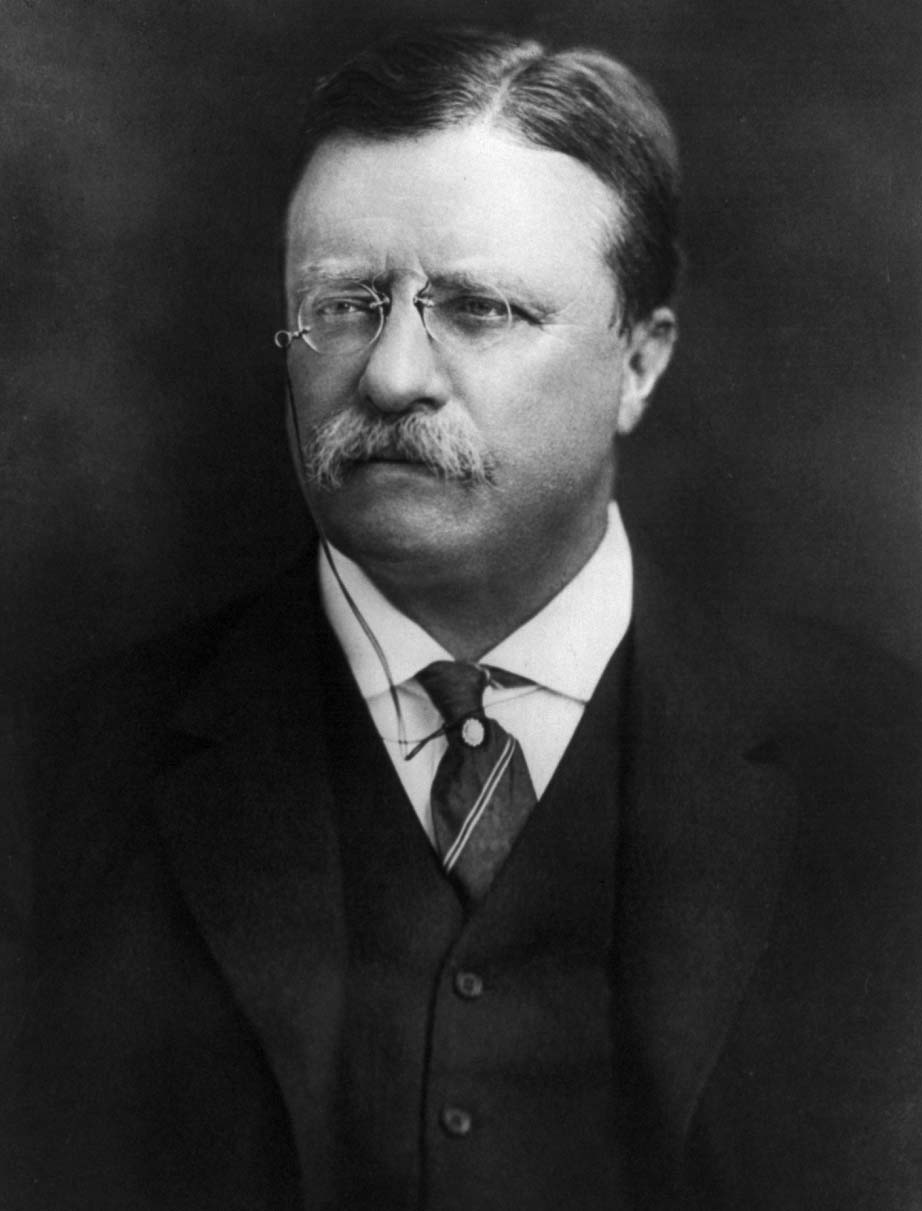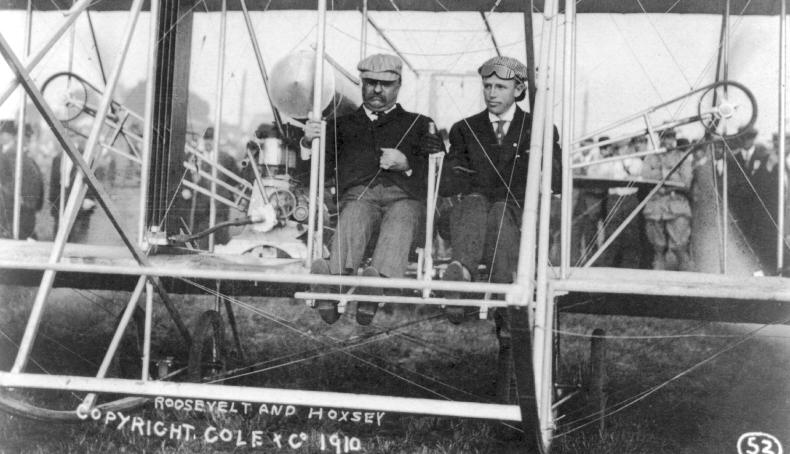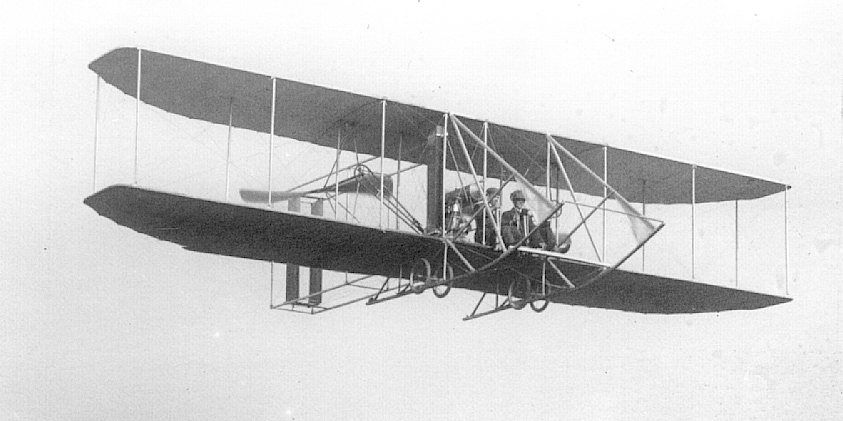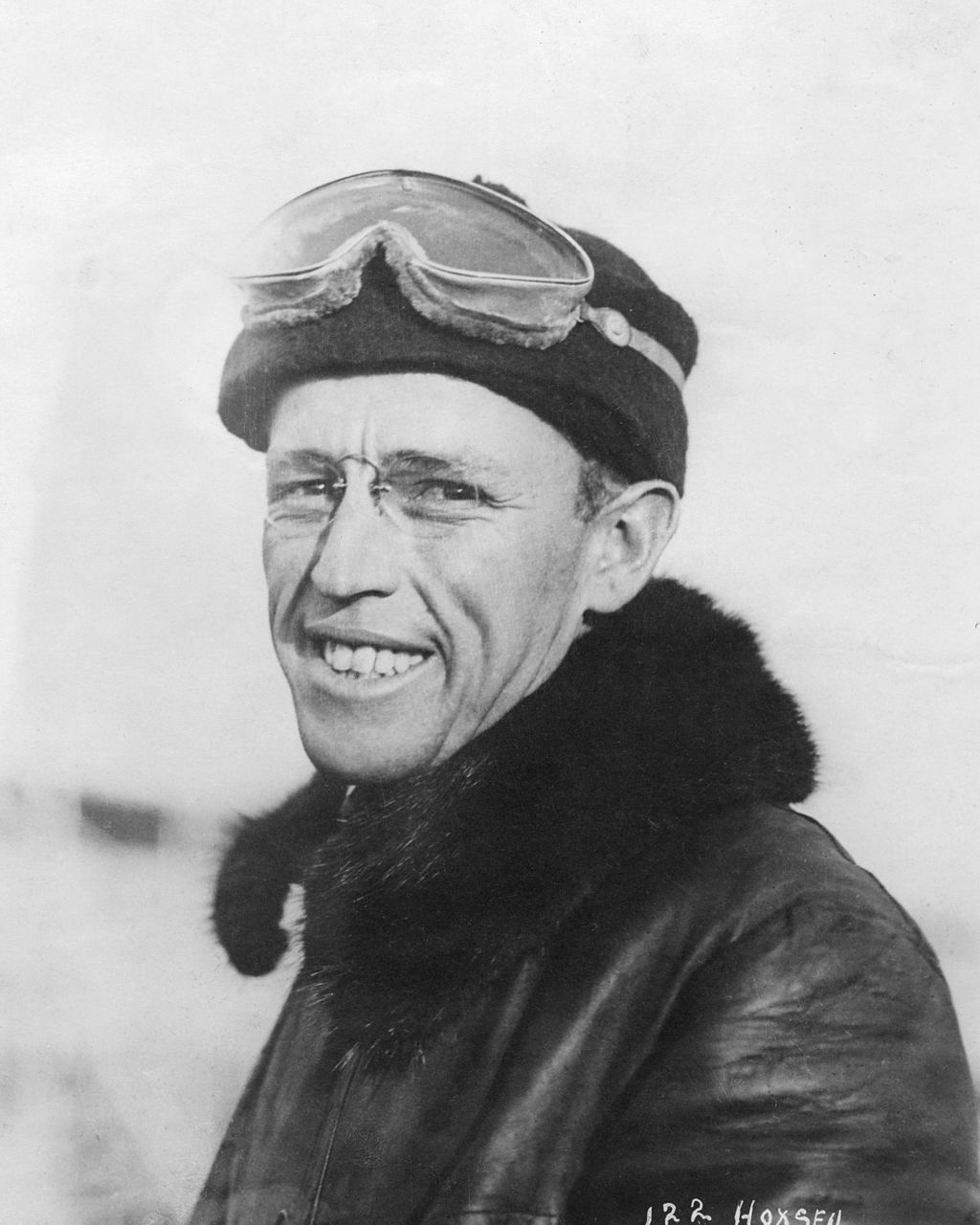
11 October 1910: Theodore Roosevelt, Jr., was the first President of the United States of America to fly aboard an airplane.
At Kinloch Field, St. Louis, Missouri, (now, Lambert–St. Louis International Airport) Arch Hoxsey, a member of the Wright demonstration team, invited the former president (1901–1909) for a flight. Initially Roosevelt declined, but then accepted the offer to accompany Hoxsey aboard the Wright Model B.

An article appearing in the New-York Tribune the following day described the flight:
. . . The aeroplane sped quickly around the field at a height of less than one hundred feet. It made the first lap of a mile and a half before news percolated through the crowd that Mr. Roosevelt was Hoxsey’s passenger. When he swept past the grandstand he leaned forward a bit and waved his hands. The spectators seemed frightened and remained silent, watching the aeroplane intently.
Nearly a Mile a Minute
The flying machine sped by and made the turn for the second lap. Hoxsey could be seen to bend over and shout something into Mr. Roosevelt’s ear. The engine cracked regularly, hurling the aeroplane forward at a speed of nearly a mile a minute, but from the ground it looked as though it were travelling much slower because it sailed so evenly and smoothly. There was not a breath of wind, and the engine did not miss fire once.
At the end of the second lap, Hoxsey dipped his planes and the machine descended easily, striking the ground without a jar a few rods from the grandstand. The machine glided over the grass a short distance and stopped.
Mr. Roosevelt, smiling his most expansive smile, disembarked backward. He became entangles in the wires, but was soon out of them.
When the spectators saw that he had landed safely, they cheered wildly, and the guards had all they could do to keep the crowd from breaking into the field.
Mr. Roosevelt’s first act after alighting was to shake Hoxsey’s hand vigorously.
“It was great! First class! It was the finest experience I have ever had,” he declared. “I wish I could stay up for an hour, but I haven’t the time this afternoon.”
—excerpted from the New-York Tribune, Vol. LXX, No. 23,341. Wednesday, 12 October 1910, Page 1, at Column 7, and Page 2, at Column 1
The event was captured on an early news film, which is in the collection of the Library of Congress.
http://www.airspacemag.com/video/Teddy-Roosevelt-Goes-Flying.html
Teddy Roosevelt served as President of the United States from 14 September 1901 to 4 March 1909, having assumed the office on the death of president McKinley. Prior to that, he had been the 25th Vice President, 4 March–14 September 1901, and the 33rd Governor of the State of New York. He had been appointed Assistant Secretary of the Navy by President McKinley in 1897. Colonel Roosevelt commanded the 1st United States Volunteer Cavalry, known as “The Rough Riders.”
The Wright Model B was a two-place, single-engine biplane. The elevator was at the rear, rather than in canard position as had been the earlier Wright airplanes. (This configuration was known as “headless.”) Roll control was through the Wright Brother’s patented wing-warping system. It was 26 feet (7.925 meters) long with a wingspan of 39 feet (11.887 meters). It weighed 800 pounds (363 kilograms) empty and had a gross weight of 1,250 pounds (567 kilograms).
The Model B was powered by a water-cooled, 240.5-cubic-inch-displacement (3.940 liter), Wright inline four-cylinder gasoline engine which produced 32 horsepower at 1,310 r.p.m. Two 8½ foot (2.591 meters) diameter, two-bladed, counter-rotating propellers, driven by a chain drive, are mounted behind the wings in pusher configuration. They turned 445–470 r.p.m.

The Wright Model B had a maximum speed of approximately 40 miles per hour (64 kilometers per hour) and its range was 110 miles (177 kilometers).
Approximately 100 Model B aeroplanes were built by the Wrights and under license by Burgess from 1910 to 1914. Three are known to exist.
Archibald Hoxsey was born at Staunton, Illinois, the son of Archibald Hoxsey and Minnie Cecelia Eckles Hoxsey. The date of his birth is difficult to determine, being reported as either 28 April or 15 October, during the years of 1879 or 1884. The 1880 Federal Census indicates that he may have been born as early as 1873.
Arch Hoxsey was killed at Carson, California, 31 December 1910, when his airplane crashed while he was trying to better his own altitude record of 11,474 feet (3,497.3 meters), set the previous day. His remains were buried at Woodlawn Cemetery, Atkinson, Nebraska.

© 2017, Bryan R. Swopes